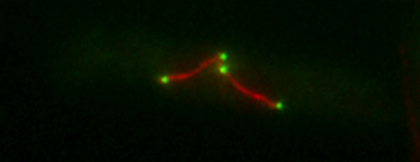asymmetry for cytokinesis
The fission yeast septation initiation network (SIN) kinase, Sid2, is required for SIN asymmetry and regulates the SIN scaffold, Cdc11
Anna Feoktistovaa, Jennifer Morrell-Falveya, Jun-Song Chena, N. Sadananda Singh, Mohan K. Balasubramanianb,c, and Kathleen L. Goulda,1
+ Affiliations
aHoward Hughes Medical Institute and Department of Cell and Developmental Biology, Vanderbilt University, Nashville, TN 37212
bTemasek Life Sciences Laboratory, National University of Singapore, Republic of Singapore 117604
cMechanobiology Institute and Department of Biological Sciences, National University of Singapore, Republic of Singapore 117604
Rong Li, Monitoring Editor
+ Affiliations
Stowers Institute
Submitted September 19, 2011.
Revised February 7, 2012.
Accepted March 9, 2012.
Abstract
The Schizosaccharomyces pombe septation initiation network (SIN) is an Spg1-GTPase–mediated protein kinase cascade that triggers actomyosin ring constriction, septation, and cell division. The SIN is assembled at the spindle pole body (SPB) on the scaffold proteins Cdc11 and Sid4, with Cdc11 binding directly to SIN signaling components. Proficient SIN activity requires the asymmetric distribution of its signaling components to one of the two SPBs during anaphase, and Cdc11 hyperphosphorylation correlates with proficient SIN activity. In this paper, we show that the last protein kinase in the signaling cascade, Sid2, feeds back to phosphorylate Cdc11 during mitosis. The characterization of Cdc11 phosphomutants provides evidence that Sid2-mediated Cdc11 phosphorylation promotes the association of the SIN kinase, Cdc7, with the SPB and maximum SIN signaling during anaphase. We also show that Sid2 is crucial for the establishment of SIN asymmetry, indicating a positive-feedback loop is an important element of the SIN.
